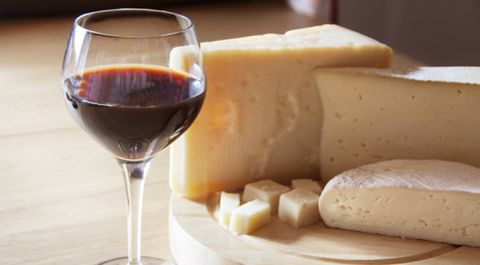The amazing world of Lion Seals
2025-04-07 13:46:01
In
the vast expanse of the Southern Ocean, where icy waters meet the
rugged shores of Antarctica, a remarkable species reigns supreme the
lion seals (Otaria jubata). These majestic marine mammals, also known as
South American sea lions, captivate the imagination with their imposing
presence and distinctive features. In this exploration, we delve into
the fascinating world of lion seals, uncovering their behaviors,
adaptations, and the crucial role they play in maintaining the delicate
balance of the Southern Ocean ecosystem.

Body:
Habitat and Distribution:
Lion
seals are primarily found along the coasts of South America,
particularly around the Falkland Islands and the southern tip of the
continent. However, they also extend their range to the sub-Antarctic
islands and even the Antarctic Peninsula, making them one of the few
pinnipeds capable of surviving in the frigid conditions of the Southern
Ocean.
The
rocky shores and ice floes of Antarctica provide an ideal environment
for these creatures, offering numerous opportunities for rest,
socialization, and, most importantly, access to their primary food
source fish and squid. The ability to adapt to such extreme conditions
highlights the lion seals resilience and their remarkable evolution to
thrive in this harsh environment.
Physical Characteristics:
Lion
seals are easily distinguishable from their relatives due to their
impressive size and distinctive features. Adult males, known as bulls,
can reach lengths of up to 3 meters and weigh as much as 350 kilograms,
while females, or cows, are generally smaller, with an average length of
2 meters and a weight ranging between 150 to 250 kilograms.
Their
sleek, streamlined bodies are perfectly adapted for life in the water,
with a robust layer of blubber providing insulation against the icy
temperatures of the Southern Ocean. Their fur, ranging from light brown
to darker shades, further aids in heat retention, making it an essential
adaptation for survival in the cold Antarctic waters.
One
of the most striking features of lion seals is the prominent,
well-developed mane that encircles the heads of mature males, resembling
a lios mane hence their name. This distinctive feature adds to their
regal appearance and plays a significant role in establishing dominance
during the breeding season.
Social Structure and Behavior:
Lion
seals are highly social creatures, forming colonies that can range from
a few individuals to several thousand during the breeding season. These
colonies are established on rocky outcrops or ice shelves, providing a
safe haven for nursing pups and fostering social interactions among
adults.
During
the breeding season, which typically occurs from November to January,
the beaches and ice floes become a bustling arena of activity. Dominant
males fiercely defend territories, engaging in intense battles to secure
mating rights with multiple females. The victorious males, easily
identified by their impressive manes and scars from battles, establish
harems of females, creating a dynamic social hierarchy within the
colonies.
Females
give birth to a single pup after a gestation period of about 11 months.
The bond between mother and pup is strong, and the mothers provide
unwavering care and protection during the vulnerable early weeks of the
pups life. Pups are born with a dark, woolly fur coat that is eventually
shed, revealing the sleek pelage characteristic of adult lion seals.
Feeding Habits and Ecological Significance:
The
lion seals diet primarily consists of fish and squid, with a preference
for species such as hake, anchovies, and cephalopods. Their hunting
prowess is enhanced by well-developed senses, including keen eyesight
and excellent underwater hearing. Lion seals are agile swimmers, capable
of reaching impressive speeds and diving to considerable depths in
pursuit of their prey.
As
top predators in their ecosystem, lion seals play a crucial role in
maintaining the ecological balance of the Southern Ocean. By controlling
the population of certain fish species, they help prevent overgrazing
of vital marine resources and contribute to the overall health of the
ecosystem.
Conservation Status and Threats:
Despite
their adaptability and resilience, lion seals face various threats that
have led to fluctuations in their populations. Overfishing, habitat
degradation, and climate change pose significant challenges to these
magnificent creatures. Changes in sea ice patterns, crucial for their
breeding and resting habitats, further compound the risks they face.
Conservation efforts are
underway to monitor and protect lion seal populations. Researchers and
environmentalists collaborate to understand their behaviors, migration
patterns, and the impact of climate change on their habitats. By raising
awareness and implementing conservation measures, there is hope that
these iconic marine mammals can continue to thrive in the Southern
Ocean.
The
lion seals, with their regal presence and captivating behaviors, stand
as ambassadors of the Southern Oceans unique and fragile ecosystem.
Their lives are intricately woven into the fabric of this remote and
enchanting world, where icy waters and rugged landscapes converge to
create a habitat unlike any other.
As
we strive to understand and protect these magnificent creatures, let us
be inspired by the resilience of the lion seals, reminding us of the
delicate balance that sustains life in the Antarctic realm. Through
dedicated conservation efforts and a collective commitment to preserving
their habitats, we can ensure that future generations will continue to
marvel at the majestic monarchs of the Antarctic the lion seals.










